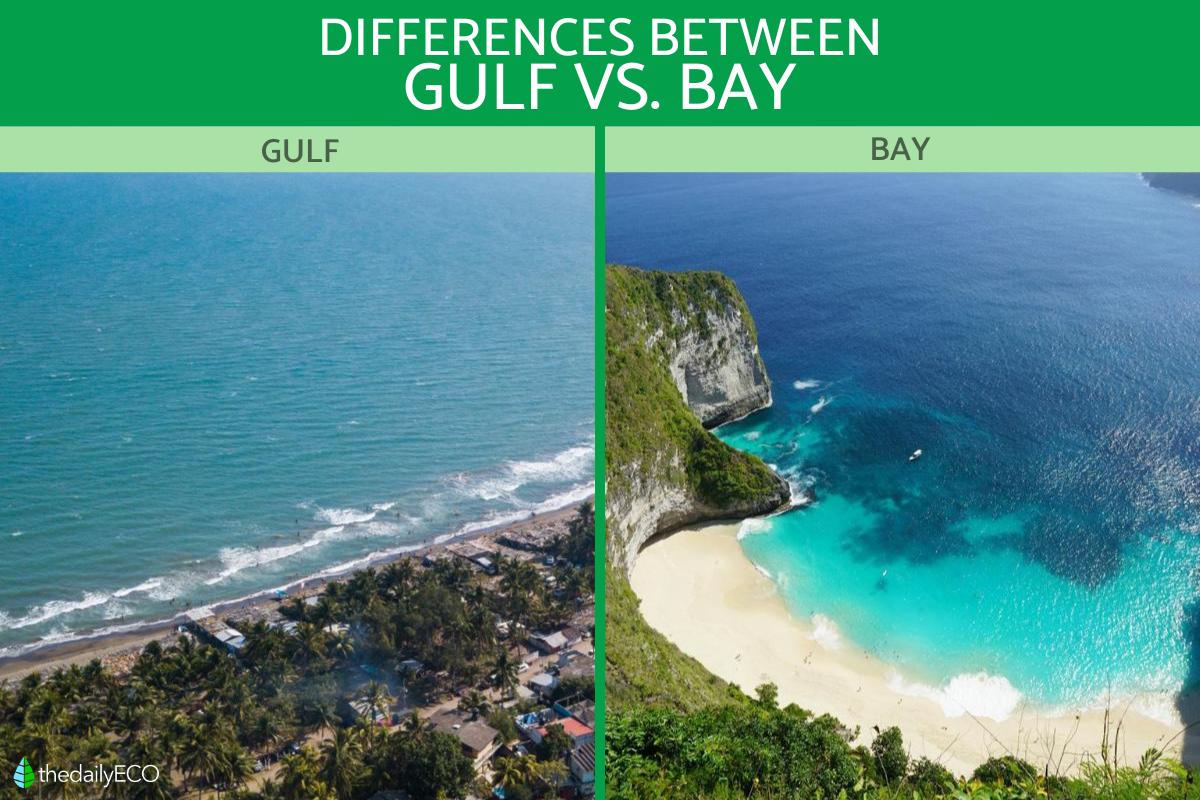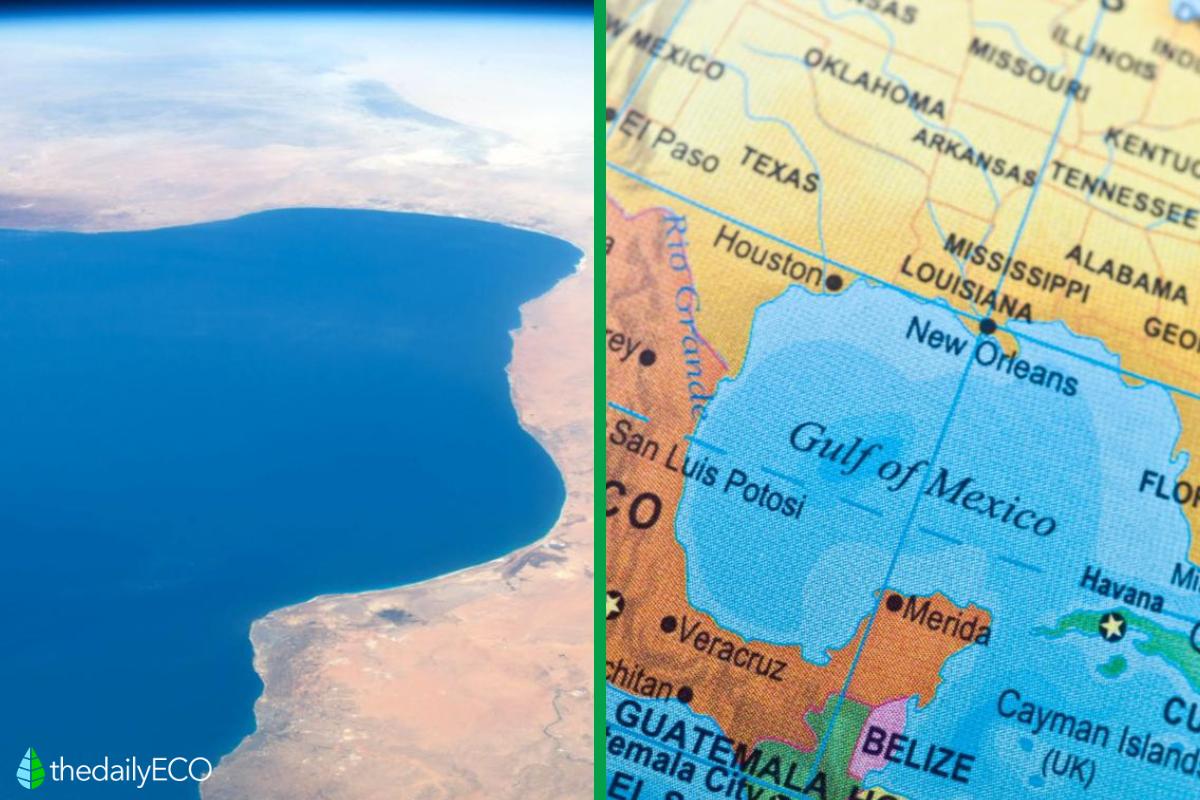Difference Between Gulf and Bay


Like many geographical features, it can be difficult to differentiate between a gulf vs. bay. They are very similar coastal areas, surrounded both by bodies of water and land on either side. There are some notable differences which can lead us to describe one or the other. These differences can be found in their size and shape, opening to the sea, geological formation and the functions they provide in terms of ecology and human use. Generally speaking, a gulf is a large body of water that juts into the land, characterized by a wide opening to the sea. In comparison, a bay is an inlet of water that also extends into land but is generally smaller compared to a gulf.
At thedailyECO, we explain more by providing the differences between gulf and bay. We look at definitions of each individually and then provide a gulf vs. bay comparison to help you distinguish between the two.
What is a gulf?
A gulf is a large portion of sea that juts into the land. It is generally characterized by having a wide opening towards the ocean or sea to which it is connected. These formations are usually the result of long-term geological processes such as coastal subsidence, tectonic movements or rising sea levels.
Gulfs play a crucial role in marine and coastal ecology, providing habitats for a wide range of marine species. In addition, they have significant importance for humans, hosting important global ports and serving as navigation routes. These can help to facilitate trade and communication between different regions, something for which they have been used for centuries.
Examples of gulfs around the world
- Bay of Bengal: despite its name, the size of the Bay of Bengal means it is classified as a gulf. It is located in the Indian Ocean, on the coasts of Sri Lanka, India, Indonesia, Bangladesh and Burma.
- Gulf of Tribugá: located in Chocó in the Colombian Pacific, it is among the 24 hotspots of greatest biodiversity on the planet.
- Gulf of Mexico: located between the coastlines of Mexico, the United States and Cuba.
- Gulf of Aden: located between Yemen in the Arabian Peninsula to the north and Somalia in Africa to the south, connecting the Red Sea with the Indian Ocean through the Strait of Bab-el-Mandeb.
- Gulf of Guayaquil: located in Puntilla de Santa Elena in Ecuador and Cabo Blanco in Peru, it is the largest inlet of water from the Pacific Ocean in South America.
Learn more about the world's seas and how they are categorized with our article on whether the Atlantic and Pacific Oceans mix with each other.

What is a bay?
A bay is an inlet of water that also extends into land, but is generally smaller compared to a gulf. According to the United Nations, a bay is understood to be a well-marked indentation whose penetration into the land in relation to its width at the opening is such that the waters it contains are surrounded by the coast. This means it constitutes something more than a mere inflection of the coast.
Bays usually have a narrower opening to the sea or ocean. Their shores tend to be more sheltered from winds and waves. The latter allows the waters in the bays to be calmer, making them ideal for creating ports and carrying out recreational activities.
Bays can be formed by various geological processes, including coastal erosion by rivers and glaciers. In the latter case, a bay formed by a glacier is known as a fjord. Volcanic activity and the movement of tectonic plates can also contribute to bay formation. These formations are important from an ecological point of view, being areas of high biodiversity and breeding grounds for many marine species. They are also essential for the economy and culture of coastal communities both for fishing and maritime trade.
Examples of bays around the world
- Hudson Bay: located in northeastern Canada, it is one of the largest bays in the world.
- San Francisco Bay: located on the west coast of the United States, in the state of California.
- Guanabara Bay: located in Brazil, in the southeast of the country, it is famous for being the place where the city of Rio de Janeiro is located.
- Ha-Long Bay: located in northern Vietnam, it is known for its emerald waters and thousands of limestone islets.
- Bay of Fundy: located between the Canadian provinces of New Brunswick and Nova Scotia, on the Atlantic coast of Canada. The Bay of Fundy is famous for having the highest tides in the world.
To confuse things further, there are other coastal regions which can be confused with a bay vs. a gulf. Learn about one of them with our article on what is a cape in geography?

Differences between gulfs and bays
Although there are differences between gulfs vs. bays, the criteria are not always exact when studied in geography. As they are both coastal areas surrounded by large areas of land, they share many similarities. Not least are their levels of biodiversity and usefulness for humans. However, we can compare the differences between a bay vs. gulf in the sections below:
- Size and shape: the most notable difference is the size. Gulfs are generally much larger and deeper than bays. Additionally, bays tend to be more circular or semicircular in shape, while gulfs can be more irregular.
- Openness to the sea: gulfs usually have a wider opening to the sea or ocean, making them less protected from currents and waves. In comparison, bays have narrower openings, contributing to generally calmer and more protected waters.
- Geological formation: although both can form through similar processes, bays are usually the result of coastal erosion rather than gulfs, which are frequently the result of large-scale tectonic processes. Learn more about tectonic processes with our article on what is an earthquake and how does it form?
- Ecological and human function: due to their calm waters, bays are often more conducive to marine biodiversity near the coast and to the development of human activities such as ports and recreation. With their large expanses of water, gulfs play an important role in regulating regional climate and ocean connectivity.
Despite their differences, gulfs and bays both play a crucial role in global biodiversity. They host rich and diverse ecosystems such as coral reefs, seagrass beds and mangroves. These ecosystems are vital to the survival of countless marine species and provide essential ecosystem services to humans. These include protection from storms, carbon sequestration and sustenance for fishing communities.
You now know the differences between gulf and bay. If you want to discover more about coastal ecosystems, you may want to learn about more diminutive bays with our article on what is the smallest beach in the world?
If you want to read similar articles to Difference Between Gulf and Bay, we recommend you visit our Ecosystems category.







